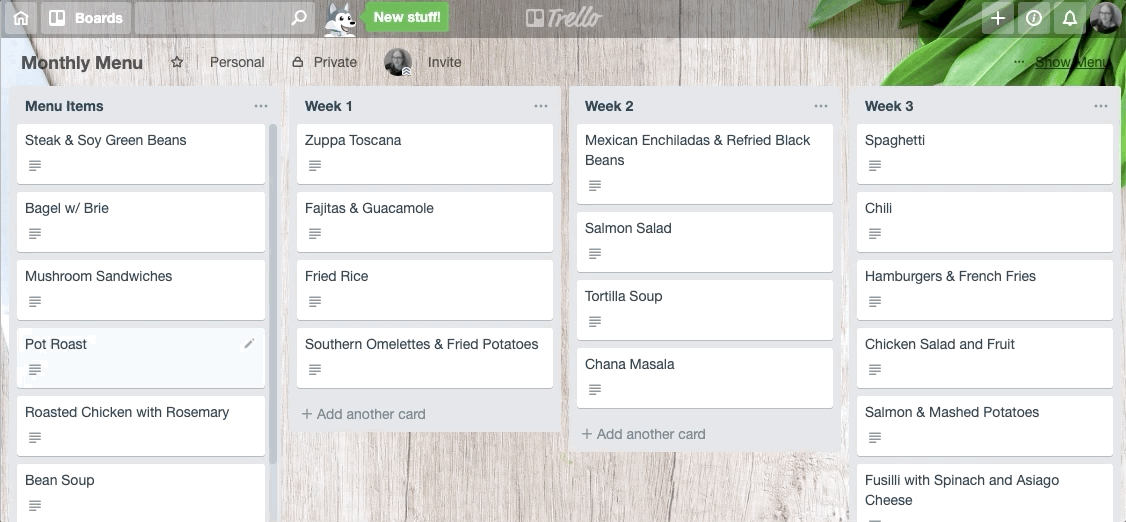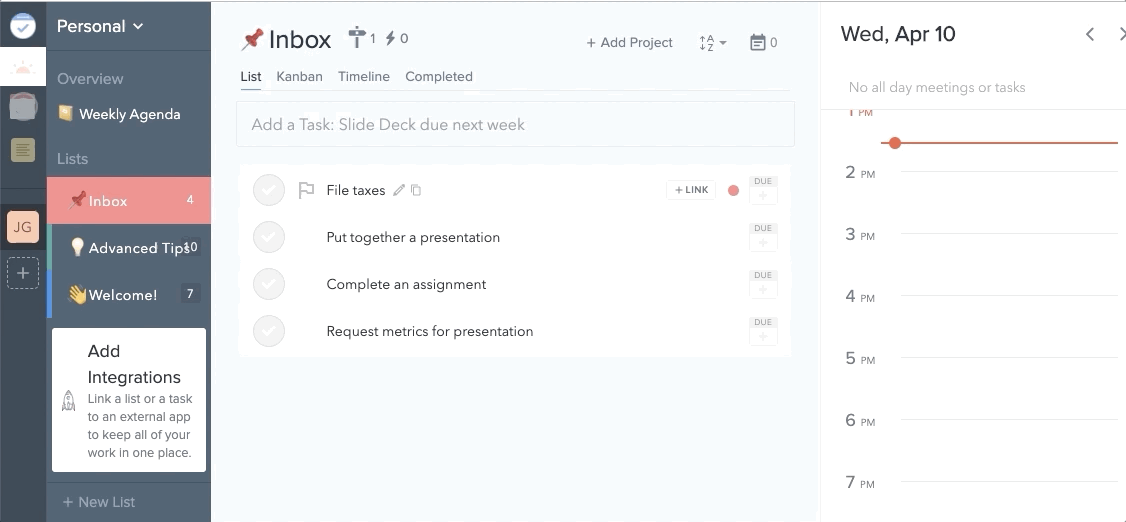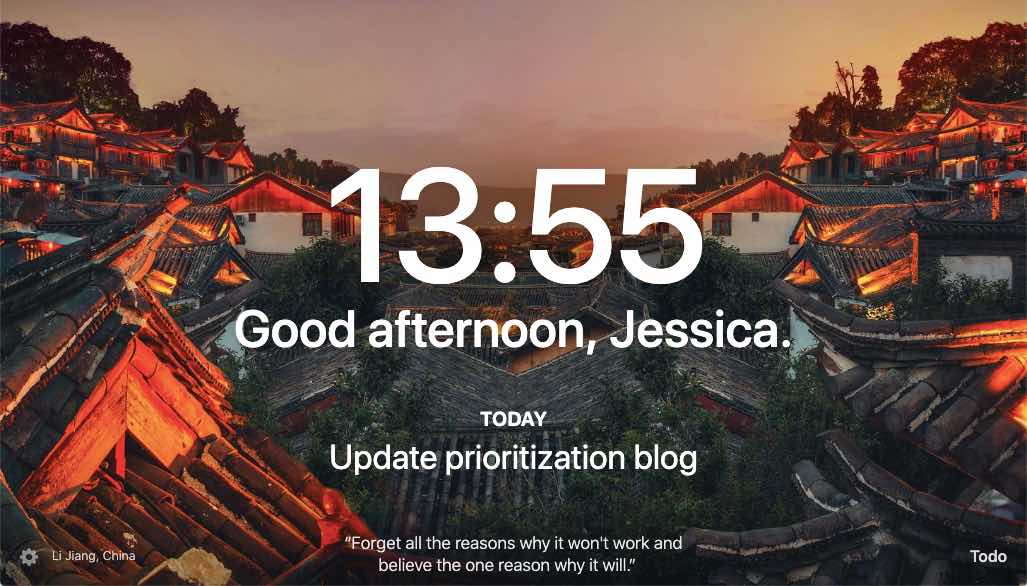How to Ruthlessly Prioritize Tasks to Get More Done
Checking items off your to-do list is a beautiful thing—but it’s also easier said than done. The best way I’ve found to make sure you complete your tasks is through ruthless prioritization. That means deciding not to do things you’d really like to do. It also means deciding what’s the most important task even when everything on your list feels crucial.
But if you can prioritize until you have only one thing to focus on right now, you can’t help but get to work. Use the tips and techniques below to help prioritize your tasks.
First, Consolidate All of Your Tasks Into a Single Source
To-dos arrive from a variety of sources. Your boss sends you an email, you get a Slack message from IT, a bill arrives in the mail, or a coworker asks for a favor in the hallway. In order to prioritize your task list efficiently, you need a master to-do list that contains all of the tasks you need to prioritize and complete from all of those sources.
Before you start prioritizing, pick a place for your master to-do list. That place could be a to-do list app, your email inbox, Slack, a paper notebook, or even a memo app on your phone. It doesn’t matter where you keep your list as long as it contains all of the tasks you need to complete.
If you do decide to use your email inbox, Slack, or another app as your master task list, you can use Zapier to automatically move incoming tasks from other sources to your master list. Here are a few examples of workflows you can use, or you can create your own automated Zap to get the job done.
Once all of your tasks are on a single list, you can start analyzing and preparing to prioritize them.
Second, Analyze Your Task List
Now it’s time to go through your list, review each task, and decide what you want to do with it. You have four options:
-
Do: complete the task now
-
Defer: complete it later
-
Delegate: assign it to someone else
-
Delete: remove it from your list
Go ahead and do any task that will take less than two minutes to complete. This is a quick way to narrow down your list to those harder-to-complete, higher-priority tasks.
Delegation is another great way to quickly cut down your task list. Assign delegatable tasks to others, and if there’s anything you’re waiting on others for, get it off your list. Create a calendar reminder to follow up on it later or add it to a shared project: Getting it off your task list will relieve the pressure of seeing it there all the time.
Next, delete anything that you really don’t need to do. Things that are worth deleting include tasks that have been on your list forever that you never get around to or things that provide little value compared to the effort involved to complete them.
For example, say you have a task on your to-do list to go through your filing cabinet, scan all of your documents, and save them to the cloud. You’ve been looking at the task for years and have never made time for it. You probably never will. So instead of continuing to look at that task and feeling guilty for never getting to it, delete it.
If you don’t want to forget a task you’re deleting, move it to a separate “someday” list of things you want to do if you ever find yourself with time but nothing to fill it with.
Once you’re finished doing, delegating, and deleting tasks, what you have left are your deferred tasks. These are all things you need to do that will take longer than two minutes to complete. With a master list of your deferred tasks in hand, you’re ready to start prioritizing.
Six Methods for Prioritizing Your Tasks
There are plenty of ways to prioritize tasks, and some may work better for you than others. Review the tactics below, pick the one that feels right, and then get to prioritizing.
1. Use a priority matrix
Take all of your tasks and assign each a priority based on this priority matrix from Steven Covey:

Anything that’s due soon (or overdue) counts as urgent. As for what’s truly important and what’s more of a “nice to do” task—that’s up to you to decide, but try to be as honest as you can.
This tool is particularly helpful for those times when you’re drowning under a million things to do, as it helps you visualize what’s really important and what can wait.
Once you’ve laid out your tasks, aim to get through the urgent and important tasks first so you’re not butting up against deadlines. Then you can focus on the most productive quadrant: not urgent and important. These are the tasks that are easy to put off but provide lots of value when they do get done.
And whatever you do, avoid the busy work and time wasters that land in the not urgent and not important quadrant as much as you can.
2. Use relative prioritization
Categorizing your tasks using a priority matrix helps, but what if you still have dozens of tasks in your urgent and important queue? How do you know where to start?
A helpful next step is to assign each task a priority number. If you have ten tasks, each task gets a number 1-10. You can’t have two number ones. The exercise here is to weigh each task against the others in order to determine where to start first. For example, say your list consists of three items:
-
File taxes (due today)
-
Complete an assignment (due tomorrow)
-
Put together a presentation (due next week)
By looking at all three tasks, it’s obvious that filing your taxes needs to be your number-one priority: It’s the most urgent and important task on your list.
For your other two tasks, it depends on context, and comparing your to-dos with each other often helps provide that context. Maybe the presentation isn’t due until next week, but you need to get some information from your boss before you can start putting the presentation together. That might make it a higher priority than completing the assignment that’s due tomorrow.
In these cases, it’s also helpful to break your tasks down into smaller tasks to better assign relative prioritizations. So instead of:
-
File taxes
-
Complete an assignment
-
Put together a presentation
You have:
-
File taxes
-
Request metrics for presentation
-
Complete an assignment
-
Put together a presentation
To-do list apps and Kanban apps that allow for drag-and-drop prioritization can be really helpful when using the relative prioritization technique. Instead of numbering your list, you can drag and drop tasks into priority order.

3. Make a prioritized task list for today
Assigning relative priorities works well if your task list is fairly static, but if you’re adding several to-dos to your list every day, reprioritizing your list becomes another task in and of itself. If you have to manage a lot of incoming to-dos, it helps to make a prioritized task list each morning for the things you plan to do that day.
Look at your calendar and see how much time you think you’ll have to devote to items on your task list today. Next, pick however many of the highest-priority tasks on your list that you think you can get through today. Ignore everything else you could be doing (until you’re ready to plan tomorrow’s list).
I like to include any calendar events on my “Today” list so I see an overview of my entire day and set my expectations accordingly. This also stops me from planning too many tasks on days I’m in meetings for hours.
Time-blocking apps like Plan (free for 1-4 members) are great for this exercise because they let you create a master to-do list and then drag and drop to-dos onto your calendar to schedule them into your day.

A good rule of thumb when planning your day is to underestimate how much you can get done and overestimate how long each task will take. No doubt you’ve got plenty of things you can do if you happen to check everything off your list for today, which is a much better feeling that always moving unfinished tasks over to tomorrow.
4. Focus on your Most Important Tasks (MITs)
It’s very simple: your MIT is the task you most want or need to get done today. – Leo Babauta, Zen Habits
If you’re prioritizing your tasks each day and still struggling to get things done, try using the Most Important Tasks (or MITs) method. Choose a few (usually three) tasks to get done each day; those become your MITs.
When using MITs, your to-do list would have 1-3 of these, and anything else listed would become bonus, “nice to do if you have the time” tasks. You only work on bonus tasks if all your MITs are done—and if all you get through are your MITs, you’ve still had a successful day.
5. Pick a single thing to focus on

We’re getting into ruthless territory now. When you’re really struggling to get anything done, you should try this method, even if temporarily.
When you look at your task list, pick a single thing to focus on that day. It could be one big task you really want to get done, or it could be a theme that relates to several of your tasks, like “increase sales.” Choosing a single task or idea to focus on can be a good way to remind yourself to stay on track whenever you find yourself getting distracted.
A Chrome extension like Momentum (free) is great for this method because it shows you what your focus is for the day each time you open a new browser tab. Or if you really want to stay on track, use StayFocusd (free) to limit the amount of time you can spend on time-wasting websites—or block them completely.
Having a hard time focusing on your work? Get back on track with one of these 10 apps that are designed to help you stay focused and avoid distractions.
6. Find your 20% task
The Pareto principle states: You tend to get 80% of your results from 20% of your work.
What’s really tricky is working out what that 20% is that brings in the results. But once you do, you can apply the ultimate ruthless prioritization to your workday: Make that 20% work your priority—and your benchmark for a productive day.
The best way I’ve found to identify my 20% work is this simple exercise: First, ask yourself what you’d work on if you could only do three things today. Be ruthless; only pick three. Next, cut that down to two. And finally, just one. If you absolutely had to stop working after doing only one task, which would you do?
It’s a really tough question to answer since we all have so many things to get through each day, but I’ve found it’s a good way to realize which of your tasks provides the most value when it’s finished.
For me, writing a new blog post would almost always be my 20% work since I get returns from writing in various ways—future SEO traffic, social shares, inbound traffic, more visibility for my personal brand and the site I’m writing for, and so on.
As you practice being ruthless with your to-dos, you’ll find it gets easier, and you’ll be able to pick the right method at the right time. And hopefully, you’ll find that ruthlessly prioritizing tasks can actually be quite liberating.
Originally published in June 2017, this post has been updated by Jessica Greene with some additional prioritization techniques, plus a few new tools that help with the different techniques.
